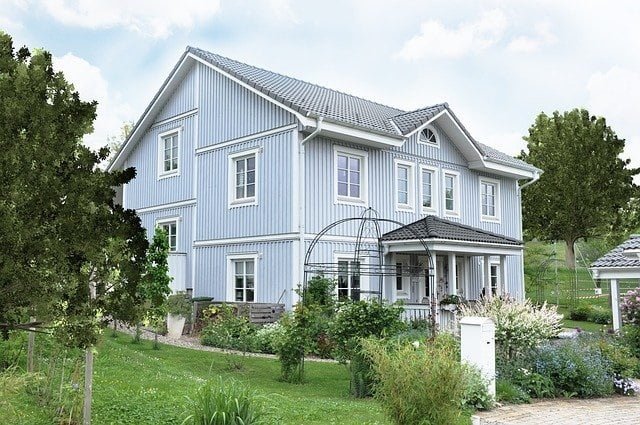Renovating a multi-level home can be both an exciting and daunting endeavor. These unique spaces offer endless potential, but they also come with their own set of challenges. From managing vertical space to ensuring fluidity between levels, homeowners must strike a balance between functionality and aesthetics.
This blog post aims to provide homeowners with practical and innovative renovation ideas to unlock the full potential of their multi-level homes. You’ll discover tips for assessing your space, creative design solutions, budget management strategies, and more.
Understanding Your Space
Before you start knocking down walls or picking out new furniture, it’s crucial to understand the potential and limitations of your multi-level home. Begin by examining the layout. Identify areas that are underutilized or problematic. Make a list of features you love and those you’d like to change. Consider how light moves through your space and how each level interacts with the others. This will help you create a cohesive plan.
Next, consult with professionals. Architects and interior designers can offer invaluable insights. They can help you understand structural limitations and suggest feasible improvements. Additionally, they can provide a fresh perspective on what’s possible within your space. Remember, the goal is to enhance both the form and function of your home.
Finally, think about the future. Will your family grow? Do you plan to age in place? These considerations can influence your renovation priorities. For instance, installing a small home elevator in Salt Lake City, UT might seem like a luxury today but could be a necessity tomorrow. Addressing these questions early on can save you time and money in the long run.
Maximizing Natural Light
One common challenge in multi-level homes is ensuring adequate natural light, especially on lower levels. Start by assessing your current light sources. Are there any obstructions, such as heavy drapes or large furniture? Removing these can immediately brighten up a space.
Consider adding windows or enlarging existing ones. Skylights and light tubes are fantastic options for bringing daylight into otherwise dark corners. If structural changes are too costly, think about using mirrors and light colors to reflect and amplify existing light. Another effective strategy is installing glass doors or partitions. These can open up a space while still providing separation where needed.
Lastly, don’t underestimate the power of artificial lighting. Layered lighting—combining ambient, task, and accent lighting—can make a significant difference. Smart bulbs that adjust color temperature throughout the day can also mimic natural light, creating a more inviting atmosphere.
Open-Concept Designs
An open-concept design can make your multi-level home feel more spacious and connected. The key is to create fluid transitions between levels without sacrificing functionality. Start by removing any unnecessary walls or barriers. This doesn’t mean you have to eliminate all partitions; partial walls or glass dividers can maintain openness while providing some separation.
Focus on a cohesive design theme. Use similar colors, materials, and styles to create a seamless flow from one level to the next. This can be particularly effective in areas like the kitchen and living room, where families spend most of their time. Additionally, consider the layout of your furniture. Arrange pieces in a way that encourages movement between levels. For example, placing a cozy reading nook at the top of a staircase can make the transition between floors more inviting.
Finally, incorporate vertical elements, such as tall bookcases or hanging plants, to draw the eye upward and emphasize the height of your space. These elements can make your home feel larger and more interconnected.
Storage Solutions
One of the biggest challenges in multi-level homes is finding adequate storage. The key is to think vertically. Utilize the full height of your walls with tall cabinets, shelving units, and wall-mounted storage. This not only maximizes space but also draws the eye upward, making rooms feel larger.
Consider built-in storage options. Custom-built furniture, such as window seats with hidden compartments, can provide both seating and storage. Staircases are another excellent opportunity for built-in solutions. Pull-out drawers or cabinets beneath the stairs can store everything from shoes to seasonal items.
Don’t forget about multi-functional furniture. Pieces like ottomans with storage compartments or beds with built-in drawers can serve dual purposes, helping you make the most of limited space. By incorporating these storage solutions, you can keep your home organized without compromising on style.
Indoor-Outdoor Connectivity
Blending indoor and outdoor spaces can make a multi-level home feel more expansive and connected. Start by evaluating how your home interacts with its surroundings. Are there opportunities to create direct access to outdoor areas from multiple levels? Adding decks, balconies, or patios can extend your living space and provide fresh air and natural light.
Use large windows and sliding glass doors to blur the lines between inside and outside. This not only increases natural light but also offers beautiful views, making your rooms feel more open and inviting. Consider installing bi-fold or stacking doors that can be fully opened to create a seamless transition.
Incorporate outdoor elements into your interior design. Use natural materials like wood and stone, and add indoor plants to bring a touch of the outdoors inside. By creating a harmonious flow between your indoor and outdoor spaces, you can enhance the overall aesthetic and functionality of your home.
Tech Integration
Integrating smart home technology can enhance the comfort and efficiency of your multi-level home. Start with a central hub or smart assistant, like Amazon Echo or Google Home, to control various devices. These systems can manage lighting, heating, security, and entertainment, making your life easier and more convenient.
Consider smart lighting solutions. Automated lights that adjust based on time of day or occupancy can improve energy efficiency and create a welcoming atmosphere. Smart thermostats, like Nest or Ecobee, can optimize heating and cooling across different levels, ensuring comfort without wasting energy.
Home security is another area where technology can make a significant impact. Smart locks, video doorbells, and security cameras can provide peace of mind and protect your home. Additionally, explore smart appliances and voice-controlled devices that can simplify daily tasks, making your multi-level home a more enjoyable place to live.
Budgeting and Planning
Renovating a multi-level home requires careful budgeting and planning. Start by setting clear goals and priorities. What are the must-have improvements, and what are the nice-to-haves? This will help you allocate your budget effectively and avoid overspending.
Get multiple quotes from contractors and suppliers. Compare their prices, services, and timelines to find the best fit for your project. Don’t forget to factor in contingency costs for unexpected expenses. A good rule of thumb is to set aside 10-20% of your budget for unforeseen issues.
Create a detailed timeline for your renovation. Break down the project into manageable phases and set realistic deadlines for each stage. This will help you stay on track and ensure that your renovation progresses smoothly. Regularly review and adjust your plan as needed to accommodate any changes or delays.
Conclusion
Renovating a multi-level home can be a rewarding experience that transforms your living space into a more functional and beautiful environment. By understanding your space, maximizing natural light, creating open-concept designs, implementing smart storage solutions, blending indoor and outdoor spaces, and integrating technology, you can unlock the full potential of your home.
Remember, careful budgeting and planning are essential to a successful renovation. Keep your goals and priorities in mind, and don’t hesitate to seek professional advice when needed.






